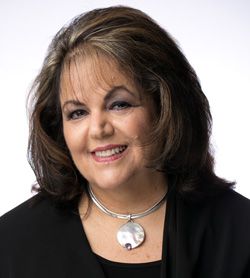
By Frances Kiradjian
Women’s equality has been put into the spotlight recently including the subject around the #MeToo movement, and the response has been tremendous, with an increase in the number of female-focused conferences and meetups. While the issue has been taken out of the dark and into the public eye, there is still a need for change within in the corporate setting, primarily within positions of power such as top executives and public and private boards.
A lack of women in executive positions is not a new issue or area of focus for some companies. A perfect example of who has been leading the path is Women on Boards 2020; an initiative started in 2010 which pushes Fortune 1000 companies to have their Boards made up of at least 20% women by 2020. They took the 2010 Fortune 1000 list as a baseline, and every year they compare each company’s board to the baseline and then track the changes. With two years left, the initiative has already had an impact to reach their goal. The number of companies that have zero women on their board has dropped from 18% to 7%, and the boards with 20% or more of female board members have jumped from 29% to 55%; all since 2011.
Why is this important to the travel industry?
The main reason is due to demographics; with women making up 70% of all travel buying decisions, two-thirds of travelers, and 54% of the affluent traveler market as stated by Travel Weekly. This market is why hotel brands like Inter-Continental and Wyndham have made strides in providing services that target women such as providing hand held clothing steamers, larger bathrooms, yoga equipment and more. According to Travel + Leisure, some hotel operators are beginning to target the needs and desires of solo female travelers with new room design, extra security features, and luxury bath products.
Another reason to have women represented on boards in travel is that women make up much of the workforce. In 2016, Travel Weekly reported that 60-65% of the hospitality workforce being women and Data USA reported that 79.7% of travel agents are women as of 2018. Hospitality is a different story entirely, especially at the top levels of leadership. In fact, BLLA has strived to promote women every year since its founding and has been instrumental in bringing attention to this subject.
When looking at the fact that over 50% of a workforce and over 50% of a consumer base are female, it would make sense to have that translate into the percentage of women on a company’s board of directors. Unfortunately, this is not the case throughout, but there are still multiple companies with a 20%+ representation of women on their board of directors.
The leader is Travel Zoo who have 80% women on their board of directors. Ralph Bartel, Founder, and Chairman of Travel Zoo spoke to USA Today stating, “It is disconcerting that only 5 of more than 4,000 companies on the Russell 3000 list have 60% or more women on their boards.”
Travel Zoo has blown the travel industry out of the water with the number of women on their board, but other industry leaders have a fair representation of women as well. For example, Women 2020 reports, Host Hotels has 33% women on their board, Hilton Grand Vacations has 25% while their Worldwide Holdings Inc. is at 33%, and Wyndham has 38%. Looking at travel associations, Travel Centers of America has 40%, and in airlines, Southwest and Spirit are at 27% and 25%. These are all excellent examples of what it can look like when companies bring on board members male and female at an equal rate.
Taking on this initiative as a travel company in 2018 is a huge deal. Even beyond the times and current events in women’s rights and equality, there is an excellent business decision when your primary demographic is women. Who best to understand how to target women but other women?
“I believe there has never been a better time for women to step up to be considered an integral member of the many Boards around the world who are now assessing who is sitting in the Boardroom and are making a concerted effort to change it, immediately,” states Frances Kiradjian. “This is certainly an exciting and opportunistic time for women in the world!”
Read the full 2017 Women 2020 Report at 2020wob.com


